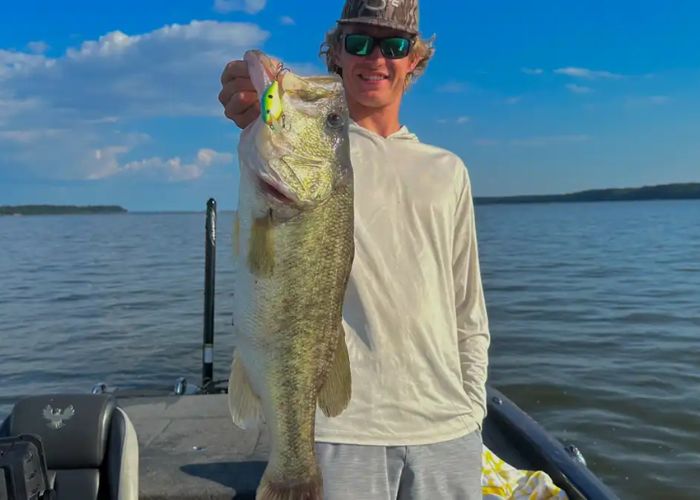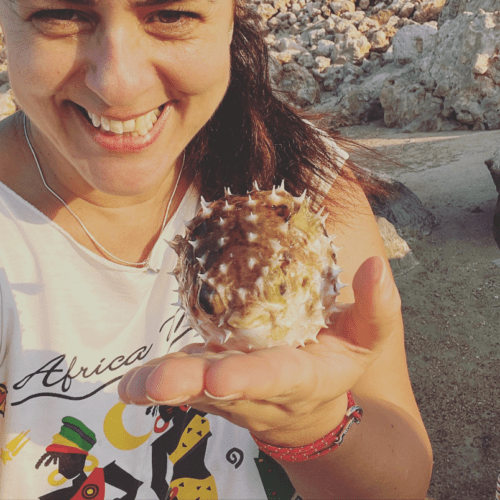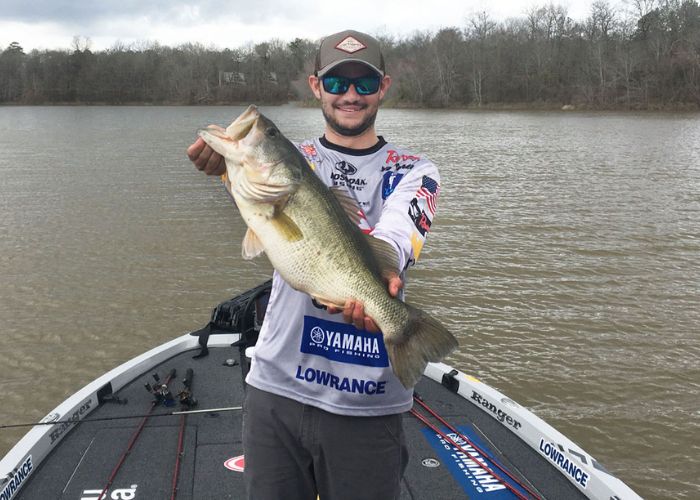After seven years of competing in bass fishing tournaments around the nation, I’ve discovered that the time immediately following spawning is crucial for bass preservation efforts. Bass are entirely devoted to mating and protecting their nests while they are in the spawn. Because of this, they are anxious and exposed. Following mating, bass go through a phase of recuperation during which they are less robust due to the stresses of reproduction. Read below about “How to Properly Care for Post-Spawn Bass-Tips from Experts”.
Both the individual bass and the population as a whole depend on careful handling and care during this post-spawn period. Here are some guidelines for taking care of bass after they have spawned, based on my extensive experience as well as discussions with specialists in the field.
Table of Contents
Pick the Appropriate Tool
Using the right tackle to reduce strain and harm is the first order of business. For rapid fish landings, my go-to tackle is braided line with fluorocarbon leaders. Also, circle hooks work well for catch-and-release because they pierce fish at the angle of their mouth, which allows for a more controlled release.
On light bites this season, don’t set the hook too violently. A strong hookset can be achieved with just a solid sweep of the rod, as bass have less energy to struggle after spawning. Fish will get exhausted if you use hefty tackle.
Reduce Conflict Duration
After spawning, bass need to be reeled in quickly. Fish can die from stress if bouts last too long. In less than a minute, I can get bass into the boat with the gear I employ.
When you get a hook, don’t pump the rod. On the contrary, you should let the bass to make first runs while adding tension to the reel drag. To bring a bass closer to you, tighten the line and employ rod lifts and reels. The objective is to land the fish as fast as possible while minimizing its effort.
Employ Appropriate Netting Methods
To keep bass in good condition, you need a high-quality rubberized net. When scooping fish, make sure to do it head-first and not squeeze the fish too hard. Serious harm can result from treble hooks being entangled in netting. As you get the fish into the boat, make sure to support its body completely.
Careful Handling
Handle post-spawn bass with utmost caution. Always release a bass from a strong grasp or while holding it vertically by the jaw. Rather, use one hand to prop up their abdomen while the other gently grasps their bottom jaw with thumb and fingers.
Unhook fish as soon as you can while they’re still in the water if you can. If the hook is deeply set, carefully back it out with pliers or cut the line close to it. Do not remove fish from their aquariums for the sake of taking pictures. Minimizing air exposure and handling is the objective.
Rescue Fish Prior to Discharging Them
Before releasing the fish, gently rock it back and forth in the water to stimulate the gills and bring more water to its surface. As the fish grows stronger, prop up its belly. Wait until the fish clenches its jaws on your thumb and kicks fiercely before releasing it.
Fish need time to recover after being released. Don’t go back into the same place and cast again right away. After being caught, bass take some time to regain their balance and go back to deeper water.
Stay away from livewells and weighing
It is not appropriate to weigh post-spawn fish in tournaments because of their fragile condition. During this time, it is also not recommended to transport bass in livewells. Because of their larger organs, bass might sustain internal injuries if kept in livewells after spawning.
Listen to the rules of the live release

In “live release” divisions of certain competitions, all bass are required to be released at once without being weighed. When fishing for an event that requires live releases, be very careful not to reel in fish that have spawned.
To take photos, you should never hold the bass horizontally. Get a fast shot of the fish propped up in the water. During a live release, the fish should never be submerged for longer than ten seconds. Reduce air exposure as much as possible when handling and use tackle.
Determining When to Cease Fishing
Consider relocating to a different place if you observe fish that are bleeding, exhibit unusual lethargy after being released, or are having trouble swimming downwards. Catching the same fish again and over again threatens their very existence.
To keep from reeling in the same fish over and over again during live release events, it’s a good idea to switch up your spot every half an hour. Stop fishing in an area if you’re catching too many fish for it to sustain itself.
Adhere to Fishing Rules
Find out what the rules are for fishing in your area. To preserve bass throughout their spawning and post-spawning stages, several states have designated specific seasons with closures or restrictions. For some time after spawning ends, these laws may make it illegal to fish for bass at all.
Live bait is also subject to regulations that aim to curb gut hooking and handling. As a responsible angler, you should familiarize yourself with the rules of your fishery and adhere to them.
Stay Away from Beds
Never fish at or near a spawning place, even after the bass have left their beds. The best place for bass to spawn is in these areas, therefore keeping them undisturbed is important for future generations. Cast your line away from the shallow beds and toward the deeper edges and structures.
Signal Potential Problems
When catching bass after they have spawned, be vigilant for any signs of illness or deformities. Problems may lie beneath the surface if symptoms like lesions, black spots, or unusual behavior persist. Please make a note of the area and inform local fisheries biologists of any concerns so that they can keep an eye out for any problems.
Good Hygiene Is Crucial
Successfully catching and releasing post-spawn bass requires the correct gear, handling techniques, and strategies. However, they do necessitate a higher level of attention compared to other seasons. Careless handling of released fish can cause them to die or struggle to recover.
Great bass fishing after the spawn can be ours while we keep bass populations healthy if we follow these guidelines. Future fisheries health can be assured by practicing catch-and-release fishing with an awareness of bass biology.
Be careful with that large fish the next time you reel in a May bite while fishing with a jig or Texas-rigged worm. With little effort, you may increase the likelihood that bass will live to spawn the following spring, leading to greater fishing excitement.

Marta, the driving force behind WaterWorldCraze.com, holds a Master’s degree in Marine Biology and has extensive experience in water sports and activities. With over 7+ years of hands-on experience in marine research and conservation, she has participated in numerous underwater expeditions and projects. Her passion for the aquatic world shines through in her expertly curated content. Join Marta as she explores the wonders of marine life and shares her adventures. Connect with her on Instagram @marinebiologymarta for more insights and updates.

